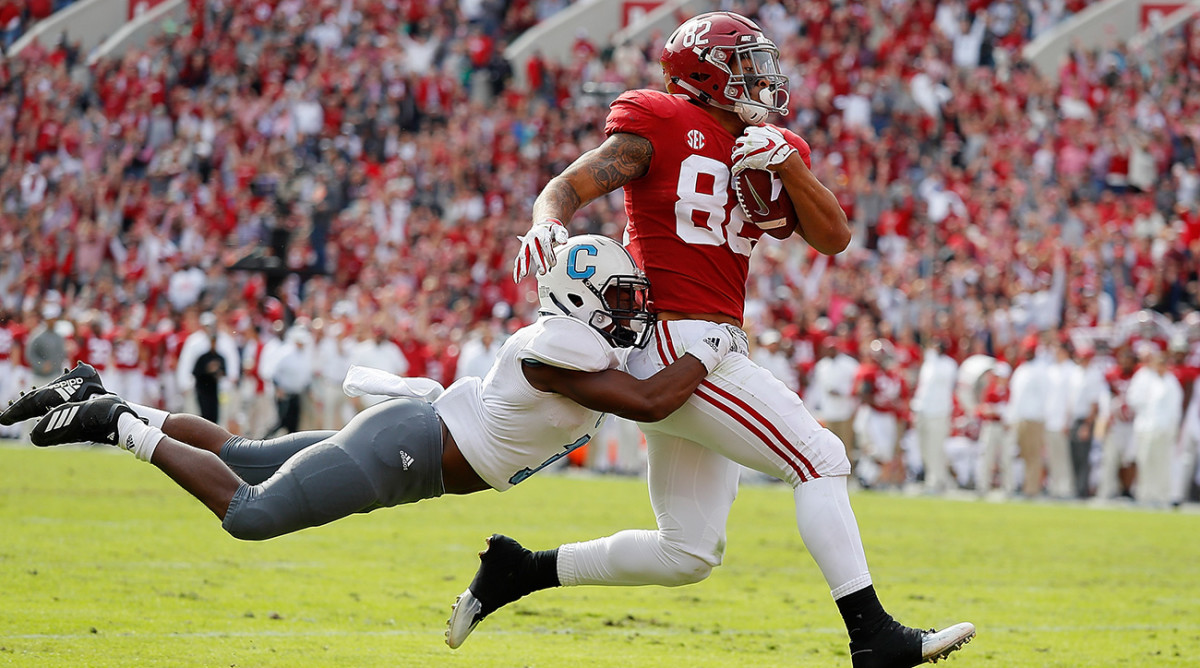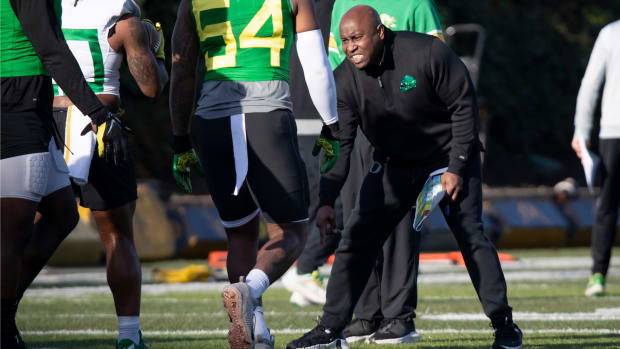Are FCS Games Good for High-Level College Football?

Last November, after breezing through its first 10 games of the season with an average margin of victory of more than five touchdowns, Alabama found itself tied at halftime, at home, against an opponent from the Football Championship Subdivision. The Citadel would go on to lose, 50–17, but for a few hours that afternoon, college football seemed upside-down. It was the most excitement a matchup between an FCS team and a Power 5 team generated in 2018 (the only upset came when Nicholls defeated Kansas, and that may not even count as an upset), and then everyone promptly forgot about it as the Crimson Tide rode its perfect season all the way to the championship game, where it lost to Clemson.
Games like Alabama vs. The Citadel are regular fixtures on many teams’ schedules near the beginning or end of the season. They almost always wind up as blowouts, and while coaches come away from walkovers with a better feel for their depth, they reveal nothing about the winning team’s top-end talent. In a sport with such a small sample size already, FCS games leave top teams with one fewer data point, with any outcome but utter catastrophe written off as unusable information in the eyes of the College Football Playoff selection committee. They’re college football’s greatest inefficiency, but they’re not going anywhere, even though the Power 5 conferences are perilously split down the middle on how to approach them.
Some embrace FBS-FCS matchups as one of the college football schedule’s many imperfections. Others consider them unnecessary complicating factors in the strength of schedule debate that rages every year in the lead-up to the selection of the College Football Playoff.
We often focus on nonconference games at the degree-of-difficulty extremes because those are the ones we notice. There are the marquee matchups between potential powerhouses, often played in the season’s first few weeks—next fall we get LSU at Texas, Texas A&M at Clemson and Notre Dame at Georgia in September alone—and then there are the games between Power 5 teams and FCS programs that, through no fault of their own, field rosters with significantly less talent. In the 460 matchups between the Power 5 and the FCS since 2010, the FCS team has won just 21 games, or 4.6% of the time. In the past two years, there have been exactly two FCS upsets in 92 tries. Alabama vs. Mercer in 2017 (56–0), Auburn vs. Alabama State on 2018 (63–9) and Miami vs. Savannah State in 2018 (77–0) reflect more typical recent results.
Within the Power 5, two conferences have made FCS opponents a regular feature of their schedules. According to STATS Inc., since 2010, the ACC has played 131 FCS opponents, the SEC 130. Meanwhile, Pac-12 teams have played 74 FCS teams, followed by the Big 12 with 69 and the Big Ten with 65. In 2014, the Big Ten tried to remove FCS games from its teams’ schedules, only to reverse course two years later when no other conferences followed suit and filling out a full slate proved difficult. The Big Ten still has the most restrictive rules pertaining to FCS scheduling, and commissioner Jim Delany’s experiment earlier this decade proves how tough it would be to completely remove those games from the ledger.
The SEC and ACC’s defense of their built-in wins is simple: Even though they play one fewer conference game than the other leagues, their schedules are the toughest in the country. Per Sports-Reference.com, the SEC has had the strongest scheduling of any conference in three of the past five seasons and the toughest schedules on average over that time—even accounting for all those FCS bouts. Both the Big Ten and the Pac-12, which play nine conference games have a higher average strength of schedule than the ACC over the past five seasons, but multiple ACC teams have season-ending games against SEC opponents to plan around.
For now, there’s one universal incentive in place to keep FCS teams off the schedule: Only one win over an FCS opponent can count toward a team’s bowl eligibility. (That doesn’t always cap the FCS games at one, though. In 2012, Florida State opened its season with two consecutive FCS opponents, winning by a combined score of 124–3.) Upgrading to a Sun Belt opponent wouldn’t have changed the course of Alabama or Clemson’s most recent seasons, but if every program with a realistic shot at a playoff spot had to pull from the bottom of the FBS, the math alone dictates that at least a few games would be semi-competitive.
Of the 20 teams that have made the playoff in its five years of existence, 13 have played an FCS foe along the way. Oklahoma hasn’t had one on its schedule in any of its three playoff seasons, nor did Michigan State when it made it after the 2015 season, nor Ohio State in its two playoff seasons. But there are several teams who landed on the fringe of the top four who might have preferred an FCS bunny over a challenging nonconference test, if given a do-over. In 2015, Stanford lost to Northwestern in Week 1, then found its stride and lost just once the rest of the way, only to finish sixth in the final playoff rankings. The next year, Penn State lost a nonconference game to Pitt and found itself in the dreaded No. 5 spot despite winning the Big Ten championship. 2017 Ohio State fell to Oklahoma in September, won the Big Ten and was left out of the playoff field. No FCS opponent would have taken away from those teams’ playoff cases more than those losses did.
For now, the benefits outweigh the costs of FBS-FCS scheduling. Until a top team is kept out of the playoff because of its performance against a lower-level opponent, get ready for more bad football. And remember: The Citadel was tied with Alabama at halftime last fall. Anything is possible. Or at least, that’s what Nick Saban wants you (and his players) to believe.





